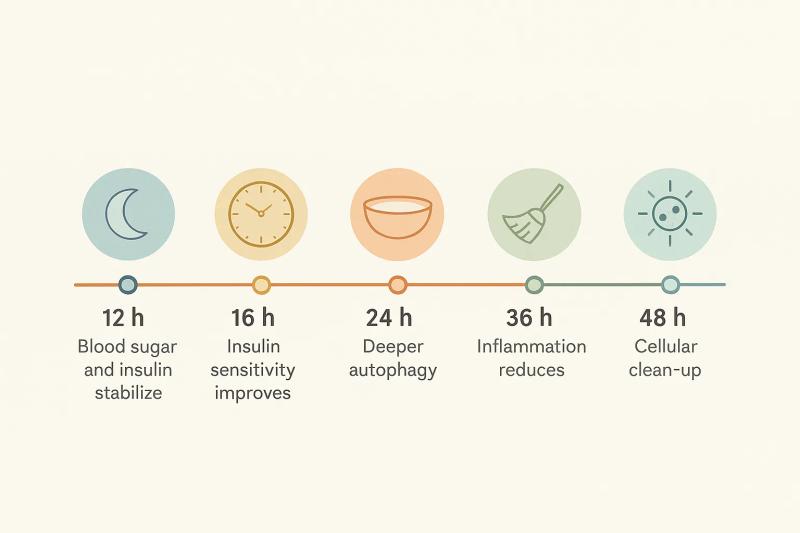When I think of rhythm in life, I think of my grandmother. Every Ekadashi — the 11th day after the full moon and new moon — she would quietly slip into her fasting day. No big announcements, no charts on the fridge. Just buttermilk here, a piece of fruit there, water throughout the day. She moved through her chores, prayers, and neighborly conversations with a calm energy that always surprised me. As a child, I thought of it as discipline. She never missed a fast. But as I grew older, I realized it wasn’t discipline at all — it was a cadence of life.
The Cycles She Knew
For her, fasting wasn’t a wellness trend or a punishment. It was life’s natural flow. Two meals most days, a fast every couple of weeks, and early dinners with the setting sun. She never spoke of “metabolism” or “gut health.” But she understood, instinctively, that the body thrives not on constant feeding, but on cycles of nourishment and pause. She called it upavasam. Today, the world calls it intermittent fasting.
What 12–24 Hours of Fasting Really Does
Research suggests that fasting sets off a gradual sequence of changes in the body:
- 12h → Blood sugar and insulin stabilize; the gut gets a rest.
- 16h → Early autophagy signals begin; the gut’s “clean-up cycle” is active.
- 24h → Light cellular clean-up; inflammation may start lowering.
- 36h → Autophagy becomes stronger; deeper cell repair and recycling.
- 48h → Robust Autophagy and immune system reset; ketones fuel the body.

Infographic showing a fasting timeline from 12 to 48 hours, highlighting changes like insulin drop, gut rest, autophagy, and immune reset.
Everyone’s timing is different — factors like age, sex, health, and diet all influence when these shifts happen. That’s why traditional rhythms (like a gentle 24-hour Ekadashi fast) are sustainable, while longer fasts are best done occasionally and with guidance.
Why Women Need a Softer Rhythm
Here’s where tradition and modern science meet again. Women’s bodies are finely tuned to energy signals. Too much fasting, too often, can strain cycles, thyroid, and stress hormones. But traditional fasting carried built-in flexibility: Buttermilk or fruit if energy was low.
Gentler rhythms during menstruation, pregnancy, or illness.The wisdom that fasting isn’t about pushing harder, but listening closer. My grandmother’s generation already knew what researchers now confirm: women thrive with gentle, rhythmic fasting (14–16 hour windows, or occasional 24-hour resets) rather than extremes.
The Lesson I Carry
Looking back, I see my grandmother was practicing what scientists today call metabolic switching. Two meals a day gave her nourishment. Ekadashi gave her body space to reset. Early dinners aligned her with the sun. She wasn’t chasing longevity. She was living it. For her, fasting was never about willpower or weight. It was about respect — for the body, for time, for nature’s cycles.
Takeaway: Food is nourishment. But so is the pause between meals. Maybe the simplest way to care for our health isn’t hidden in apps or supplements, but in remembering the quiet wisdom our grandmothers carried: the art of eating with rhythm, and the grace of sometimes not eating at all.
Share this article
